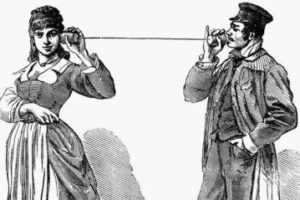Most news stories today are rather grim. Whether you follow cable, broadcast or social media, the world seems out of sorts. It’s hard to sit through a newscast without feeling glum or worried for our future. We—arts education activists– can change that; we can put a smile on the day with stories of students making music, creating art, dancing up a storm, and becoming a new character on stage.
We can be the good news.
Feel-good stories are great. Even better when they serve a larger purpose, such as the advancement of arts learning (no disrespect to cat videos). Think about your reactions when you see students who are engaged in joyous arts learning activities. Yes, it puts a smile on your face. It also provokes positive emotional responses related to the activity, the student, the program and the school/organization.
And by extension, positive responses may then be linked to a greater likelihood that the viewer/reader would support your program. (E.g., think about the programs that have seen huge spikes in donations after a good news story is aired.) Stories can promote visibility, demonstrate value among school administrators, drive audiences to your website and programs, and keep your program “top of mind” for potential donors and sponsors.
Demonstrating impact through storytelling should be a natural fit for the arts education field. Turns out, though, that we’re not so great at it. Common pitfalls may include bad visuals, little or no context, too wonky (dry and data heavy), too “insider baseball,” or no story arc.
Keep in mind that communications departments at school districts are hungry for the good news. When I was directing the Music Makes Usinitiative at Metro Nashville Public Schools, I would regularly get calls asking if I had any newsworthy stories—for internal newsletters to administrators, for school board briefings, for visiting groups, for the media, etc. Being the go-to good news person with the district communications team is a great way to highlight schools, teachers, and students and to leverage your opportunities for visibility.
Teachers also play an important role in driving interest through internal and public channels. As the adult who is closest to the student, stories from teachers can provide that spark of authenticity. Some teachers have a natural affinity for social media and are brilliant in promoting their programs. Reach out to those digital natives if you need help. A good starting place is with everyday successes that may not be visible in the final work; describing the artistic process in a relatable way. Think of the good news updates as tiny desk concerts for arts education. Some examples:

Students are ready! Our artwork will be exhibited at the museum for a month, starting on April 30. Come see if you recognize your child in these self-portraits.

And we’re off book, heading into final rehearsals. Getting ready for opening night in 2 weeks. Don’t miss it!

We celebrate Fridays with dances that demonstrate balancing shapes that can move through space at high/medium/low levels.

Breakthrough! Getting those tricky rhythms takes time, listening to each other, repetition and a good sense of humor.
And some general lessons learned over time with much trial-and-error:
- Connect the activity with the larger mission.
- Imagine you are speaking to a larger audience (avoid jargon and acronyms).
- Keep the focus on the students.
- Stay positive; celebrate accomplishments.
- Use high quality photos and videos.
- Close ups are better than group shots. (Make sure you have permission to post student images.)
- Keep the text brief; rely on compelling visual images to tell the story.
- Regular postings on social media help to create the buzz of success.
- Choose social media platforms carefully and monitor privacy concerns.
- Use ## and links to reach a wider audience.
- Acknowledge all program partners and donors regularly and link to their websites/social platforms.
Whether you are an arts administrator, teacher, nonprofit arts provider, or teaching artist, take the opportunity to preach and reach beyond the choir.
Be the Good News.
Resource:
Andy Goodman and his team at The Goodman Center have made it their mission to help nonprofits tell better stories– “Where Do-Gooders Learn to Do Better.” Their online and in-person workshops and webinars cover topics such as storytelling, giving presentations, delivering a pitch, and running meetings.
Photo by Jon Tyson on Unsplash





